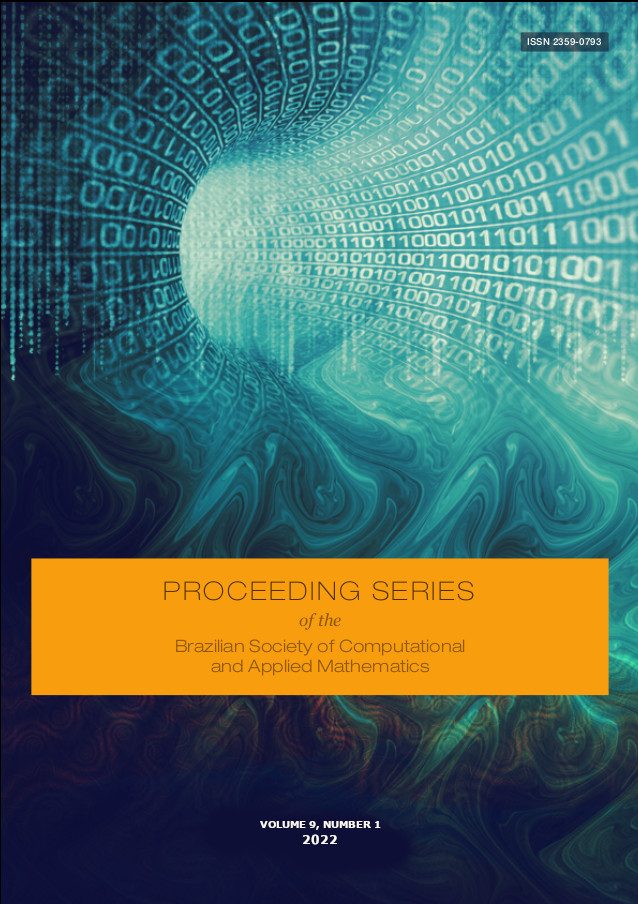Resonant Orbits due to Evection Resonance
DOI:
https://doi.org/10.5540/03.2022.009.01.0300Palavras-chave:
Astrodynamics, Non-Linear Dynamic, Evection Resonance, Artificial Satellite.Resumo
Depending on the frequency of the mean motion of the third body, some secular resonances involving this frequency and the frequencies of the longitude of the pericenter or longitude of the ascending node of the satellite, can appear in this problem. In this case, averaging in the mean motion of the Sun can not be applied, while single averaging in the mean longitude of the satellite is always recommended since it greatly simplifies the calculations. We developed the equations to calculate the resonant semimajor axis due to the evection resonance considering the J2 and C22 terms. With these equations, we show some examples of the resonant semimajor axis for the planets Earth and Mercury and of the dwarf planet Haumea. Using the single-averaged model (keeping only J2 and third body perturbation), we draw some simple curves (Contour Plots) to identify resonant orbits due to evection resonance.
Downloads
Referências
D. Brouwer e G. M. Clemence. Methods of celestial Mechanics. New York: Academic Press, 1961.
J. P. S. Carvalho. “Ring dynamics around non-axisymmetric bodies with application to Chariklo and Haumea”. Em: J. Phys.: Conf. Ser. 1365 (2019), pp. 1–8.
J. P. S. Carvalho et al. “Some characteristics of orbits for a spacecraft around Mercury”. Em: Comp. Appl. Math. 37 (2018), pp. 267–281.
A. Celletti e C. B. Galeş. “A study of the lunisolar secular resonance 2 ˙w + Ω = 0 ˙ ”. Em: Front. Astron. Space Sci. 3 (2016), pp. 1–9.
J. Frouard, M. Fouchard e A. Vienne. “About the dynamics of the evection resonance”. Em: Astronomy & Astrophysics 515 (2010), pp. 1–11.
C. A. Giuppone, F. Roig e X. Saad-Olivera. “Modeling the evection resonance for Trojan satellites: application to the Saturn system”. Em: Astronomy & Astrophysics 620 (2018), pp. 1–13.
M. Lara. “On inclination resonances in Artificial Satellite Theory”. Em: Acta Astronautica 110 (2015), pp. 239–246.
D. M. Sanchez. “Dinâmica ressonante de alguns satélites artificiais terrestres no sistema terra-lua-sol”. Dissertação de mestrado. UNESP, 2009.
D. M. Sanchez et al. “Some Initial Conditions for Disposed Satellites of the Systems GPS and Galileo Constellations”. Em: Mathematical Problems in Engineering Vol. 2009 (2009), pp. 1–22. doi: 10.1155/2009/510759.
B. Sicardy, R. Leiva e S. et al. Renner. “Ring dynamics around non-axisymmetric bodies with application to Chariklo and Haumea”. Em: Nature Astronomy 3 (2019), pp. 146–153.
C. Spalding, K. Batyging e F. C. Adams. “Resonant removal of exomoons during planetary migration”. Em: The Astronomical Journal 817 (2016), pp. 1–13.
J. Touma e J. Wisdsom. “Resonances in the Early Evolution of the Earth-Moon System”. Em: The Astronomical Journal 115 (1998), pp. 1653–1663.
E. Tresaco et al. “Averaged model to study long-term dynamics of a probe about Mercury”. Em: Celest. Mech. Dyn. Astron. 130 (2018), pp. 1–26.
T. Yokoyama. “Dynamics of some fictitious satellites of Venus and Mars”. Em: Planetary and Space Science 47 (1999), pp. 619–627.
T. Yokoyama. “Possible effects of secular resonances in Phobos and Triton”. Em: Planetary and Space Science 50 (2002), pp. 239–246.

